
八月诞生石:橄榄石与尖晶石的双重魅力
两种传统的八月生日石是令人惊艳的橄榄石和尖晶石。橄榄石呈黄绿色,而尖晶石则颜色多样,常常被误认为是其他宝石。
公元前8年,罗马皇帝奥古斯都·凯撒将八月命名为“August”(八月),以纪念他过去在八月取得的胜利。此前,八月被称为“Sextilis”(六日),意为“第六日”,因为三月是一年的开始。
许多古老的节日在八月举行,祈求丰收、平安,以及祈求季节更替的和平。
八月象征着丰饶、守护和再生。八月诞生石也体现了这些特质!
今天,我们将深入探讨八月生日石橄榄石和尖晶石的历史、含义、能量和价值因素。我们还会介绍一些其他的生日石和礼物推荐!
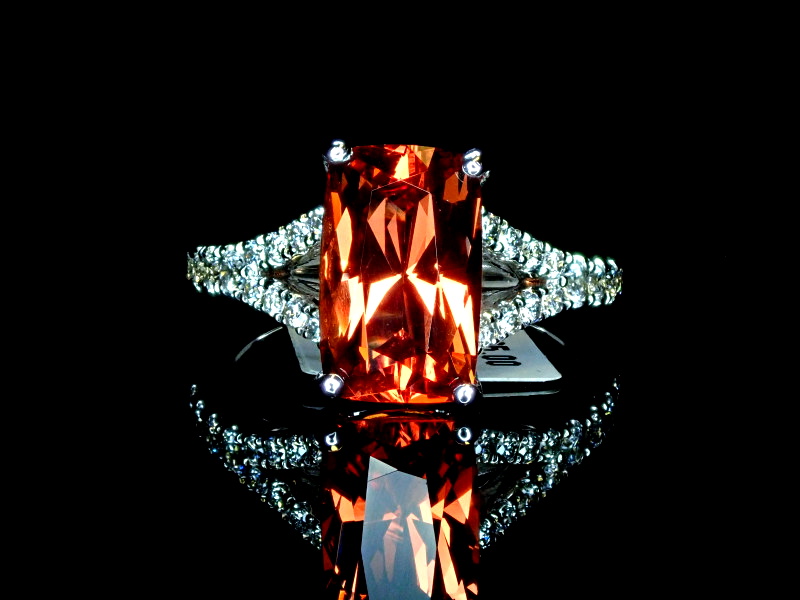 上图:橙色尖晶石戒指
上图:橙色尖晶石戒指
八月诞生石的历史和文化意义
为什么八月诞生石有三种?首先,并非所有榜单都列出三种八月诞生石。其次,诞生石的种类也随着时间推移而变化。
那么,八月诞生石是什么时候改变的呢?
早在公元1世纪和5世纪,早期诞生石的列表就受到了圣经中12种宝石列表的启发。在这些列表中,八月诞生石要么是红玉髓,要么是缠丝玛瑙。
1870 年,蒂芙尼公司 (Tiffany & Co) 出版了一本诞生石诗歌小册子,以红玛瑙作为八月的诞生石。
第一份标准化清单由美国珠宝商协会 (现为美国珠宝商协会) 于 1912 年创建。该清单将红玛瑙列为主要的八月诞生石,橄榄石作为替代。
1937 年,美国金匠协会发布了一份优先顺序颠倒的清单——橄榄石为主要宝石,红玛瑙为次要宝石。
后来,美国宝石贸易协会与美国珠宝商协会合作,对1912年的名单进行了修改。其中一项修改是将尖晶石列入2016年8月的名单。
这就是为什么我们在今天的指南中重点关注橄榄石和尖晶石。
了解了诞生石的历史后,我们接下来将深入探讨这些宝石各自的历史。
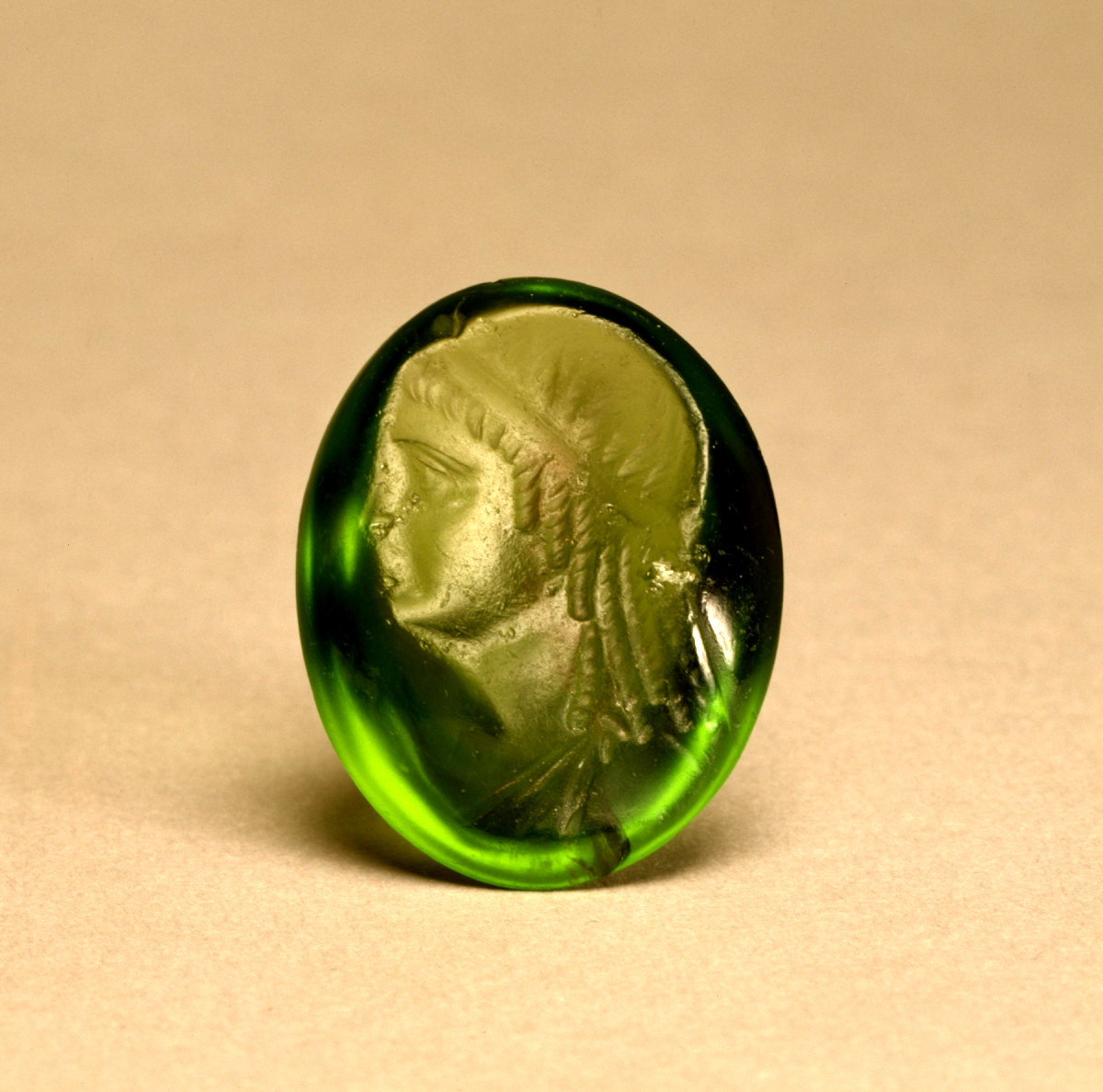 上图:克利奥帕特拉二世的橄榄石凹版肖像,约公元前 175 年至公元前 115 年之间(希腊化-托勒密时期)| 图片来源:沃尔特斯艺术博物馆,公共领域
上图:克利奥帕特拉二世的橄榄石凹版肖像,约公元前 175 年至公元前 115 年之间(希腊化-托勒密时期)| 图片来源:沃尔特斯艺术博物馆,公共领域
橄榄石在古代文化中的丰富历史
橄榄石的历史始于古埃及。
橄榄石开采的最早记录可以追溯到公元前 1500 年,当时古埃及人在托帕齐奥斯(现称为圣约翰岛或扎巴加德)发现了八月诞生石。
克利奥帕特拉相信橄榄石可以抵御邪恶力量,埃及祭司用镶嵌橄榄石的高脚杯饮酒,与自然之神交流。
古老的夏威夷传说将橄榄石与火与火山女神佩蕾联系在一起。一些神话传说橄榄石是佩蕾的眼泪。另一些则声称,这些诞生石是佩蕾赐予的治愈之物。
从历史上看,橄榄石曾与许多宝石混淆。
早期名称“ chrysolite ”可能要负部分责任。“Chrysolite”和“ topaz ”分别指产自托帕兹的金绿玉石、橄榄石和葡萄石。
另一个长达数个世纪的混淆是橄榄石与祖母绿之间的混淆。
事实上,古罗马人称橄榄石为“黄昏祖母绿”。一些历史学家认为,克利奥帕特拉的祖母绿收藏实际上就是橄榄石。
其他被误认为是祖母绿的橄榄石的著名例子包括:
德国科隆大教堂三圣王神龛上的 200 克拉宝石
法国皇后约瑟芬·波拿巴的项链,由她的皇帝丈夫拿破仑赠送——拿破仑恰好出生在八月!
然而,没有哪种宝石比尖晶石更能获得“冒牌货”的称号。
 上图:奥古斯特·舍夫特(August Schoefft)于1841-1842年左右绘制的谢尔·辛格大君(Maharaja Sher Singh)画作中帖木儿红宝石的细节图 | 图片来源:奥古斯特·舍夫特(August Schoefft),公共领域
上图:奥古斯特·舍夫特(August Schoefft)于1841-1842年左右绘制的谢尔·辛格大君(Maharaja Sher Singh)画作中帖木儿红宝石的细节图 | 图片来源:奥古斯特·舍夫特(August Schoefft),公共领域
尖晶石的有趣历史联系与困惑
尖晶石的大部分历史都与被误认为是珍贵宝石有关,尤其是蓝宝石和红宝石。
历史上,“红宝石”通常用于指代所有红色宝石。中世纪时,进口红宝石传入欧洲,产自阿富汗的尖晶石则被冠以“巴拉斯红宝石”的称号。
直到 19 世纪,欧洲皇室仍在争夺“巴拉斯红宝石”,尽管一些中世纪学者认为它们与真正的红宝石不同。
被误认为是红宝石的尖晶石的著名例子是黑王子红宝石和帖木儿红宝石。
黑王子红宝石最初归14世纪格拉纳达王子阿布·赛义德·法拉吉所有。最终,它被伍德斯托克的“黑王子”爱德华所得。它最终成为维多利亚女王1838年加冕时使用的帝国皇冠的中心石。
帖木儿红宝石(如上图所示)以帖木儿统治者帖木儿的名字命名,人们误以为帖木儿在 1398 年入侵德里时夺取了这颗宝石。宝石的所有权在多位莫卧儿王朝和锡克教统治者之间辗转,直到 1849 年被东印度公司夺取。
他们于 1851 年将它赠送给维多利亚女王。1853 年,女王将它镶嵌在 Garrards 项链上。
幸运的是,尖晶石已逐渐被认可为美丽的宝石和用途广泛的八月诞生石。
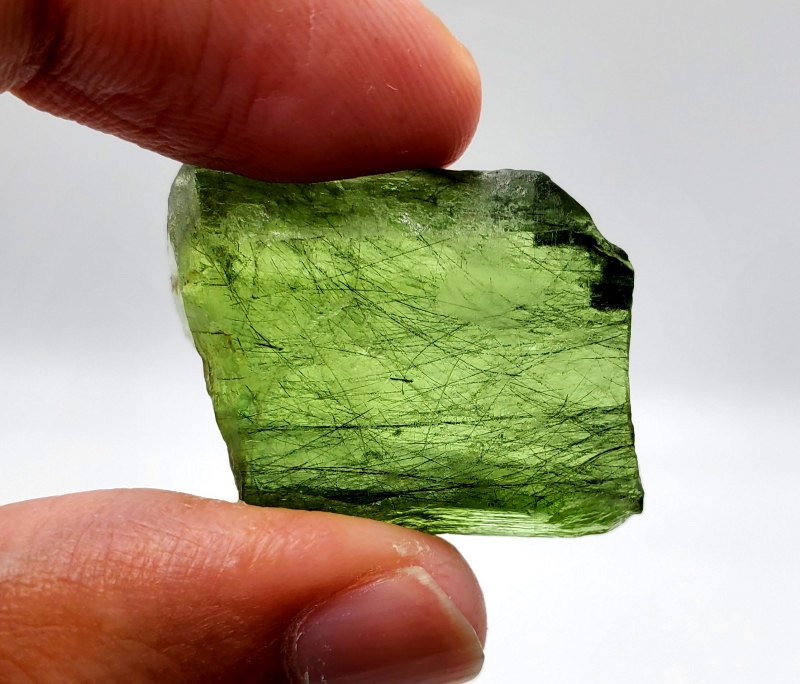 上图:含针状内含物的橄榄石原石
上图:含针状内含物的橄榄石原石
地质奇迹:橄榄石和尖晶石的起源
从橄榄石开始,这种八月诞生石是一种镁铁硅酸盐和宝石形式的橄榄石(有时称为温石棉)。
橄榄石常见于橄榄岩中。然而,更值得注意的是,一些橄榄石晶体来自地外,存在于被称为橄榄陨石的古老石铁陨石和彗星尘埃中。
如今,大多数橄榄石晶体产自美国亚利桑那州、缅甸、巴基斯坦和斯里兰卡。缅甸和埃及出产的橄榄石最大,可刻面。
再来说说尖晶石。这种八月诞生石是等轴氧化铝尖晶石亚族中的一种镁铝氧化物。该亚族中的其他宝石包括磁铁矿和锌尖晶石,但尖晶石是该亚族中唯一常用于珠宝制作的宝石。
虽然尖晶石是在母岩中形成的,但矿工通常在冲积矿床中发现它们,在那里,水侵蚀了岩石并将宝石带到下游,沿途通常会使晶体变圆。
尖晶石诞生石遍布世界各地,但宝石级样品的主要来源是阿富汗、缅甸和斯里兰卡。
 上图:多面橄榄石
上图:多面橄榄石
绿色及其他色彩:橄榄石的光芒
橄榄石是少数以绿色定义的宝石之一,但这种八月诞生石的颜色实际上范围从纯绿色到黄绿色到棕绿色。
为什么八月诞生石是绿色的?橄榄石具有自色性,因此它的绿色来自于其矿物配方中存在的亚铁离子 (Fe2+)。
三价铁(Fe3+)可以赋予宝石黄色的底色,而铬则可以提亮绿色。理想的铁含量为12%至15%,含量过高则会导致宝石颜色偏棕,价值也随之降低。
许多橄榄石宝石可以通过其产地来识别:
中国长白:明亮的柠檬绿
中国湖南:黄绿色较多
缅甸:亮中绿色至深绿色,油性
挪威松德莫尔:浅柠檬绿
克什米尔,巴基斯坦:苹果绿或柠檬绿,金色底色
埃及扎巴加德(Zabargad) :浓郁的中绿色
就光学效应而言,橄榄石很少呈现出猫眼效应或星光效应。此外,这种八月生日石的高双折射性可能会导致刻面重影和模糊不清。
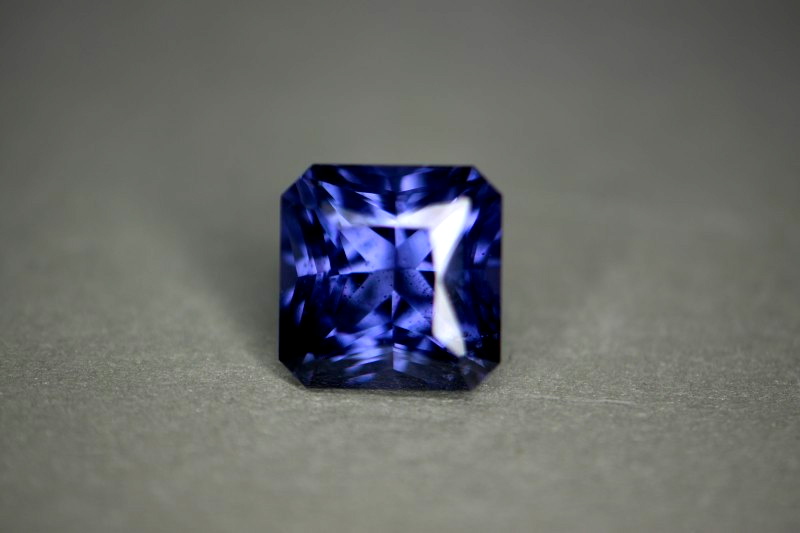 上图:刻面紫色尖晶石
上图:刻面紫色尖晶石
尖晶石的多种颜色
尖晶石八月生日石的颜色种类繁多,几乎涵盖了彩虹中的所有颜色以及介于两者之间的各种色调。大多数尖晶石宝石呈红色、粉色、橙色、淡紫色和蓝色。
该诞生石颜色背后的杂质是:
铬、三价铁和/或钒 – 红色、洋红色、紫色
钴和/或亚铁 – 蓝色、蓝紫色、紫色
钒 – 橙色、橙红色
亚铁和三价铁电荷转移 – 绿色
氧化镁铝-黑色
某些杂质和颜色导致了不同的品种和商品名称——请在我们的尖晶石信息指南中阅读更多相关信息。
一些缅甸尖晶石会呈现出星光般的光泽。更罕见的是,尖晶石会变色,在阳光下呈现灰蓝色或紫色,在白炽灯下则呈现紫色或红紫色。
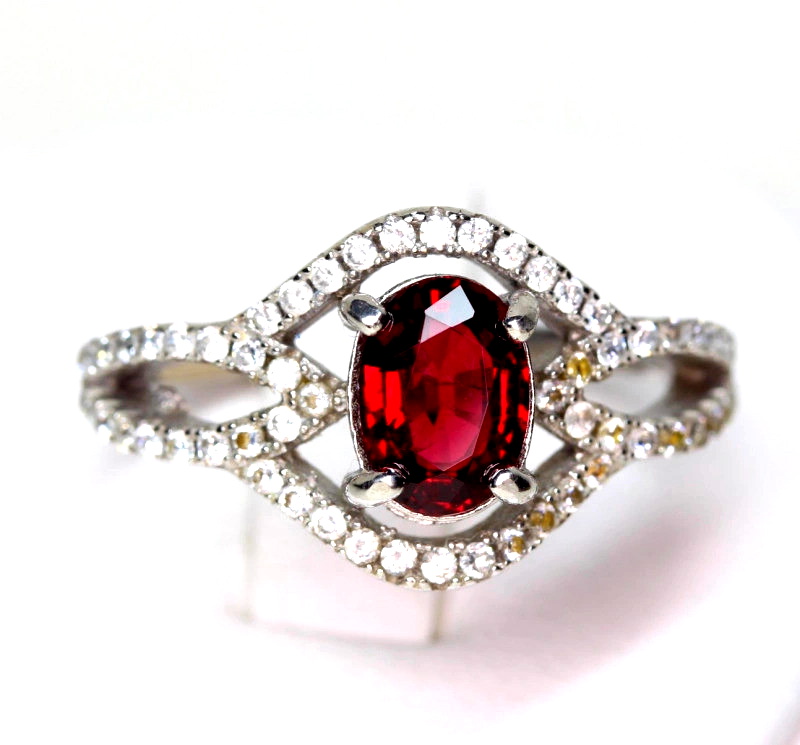 上图:红色尖晶石戒指
上图:红色尖晶石戒指
评估品质:橄榄石和尖晶石的特征
橄榄石和尖晶石诞生石的品质根据颜色、净度、切工和克拉重量以及所进行的任何处理进行分级。
颜色
橄榄石:纯净、鲜艳的草绿色橄榄石通常价值最高,其次是中等饱和度的黄绿色橄榄石。黄色底色的橄榄石最为常见。棕色底色的橄榄石价值较低。
尖晶石:最稀有、最有价值的尖晶石依次为红色、钴蓝色、亮粉色和亮橙色。
价格更实惠(但依然美丽)的选择是紫色,例如淡紫色、蓝紫色和紫罗兰色。饱和度更高的紫色更稀有,也更珍贵。
明晰
净度描述可见内含物的程度,内含物会降低宝石的透明度和价值。橄榄石和尖晶石均属于II型净度,这意味着高品质的样品通常肉眼无瑕(不放大镜下看不到内含物)。
橄榄石:放大镜下,许多橄榄石宝石含有“睡莲叶”状内含物,这使得宝石更难切割。内含物越少越好。
尖晶石:许多尖晶石拥有引人入胜、独特的八面体晶体内含物排列。排列整齐的金红石针状体形成了珍贵的“星光”效果。
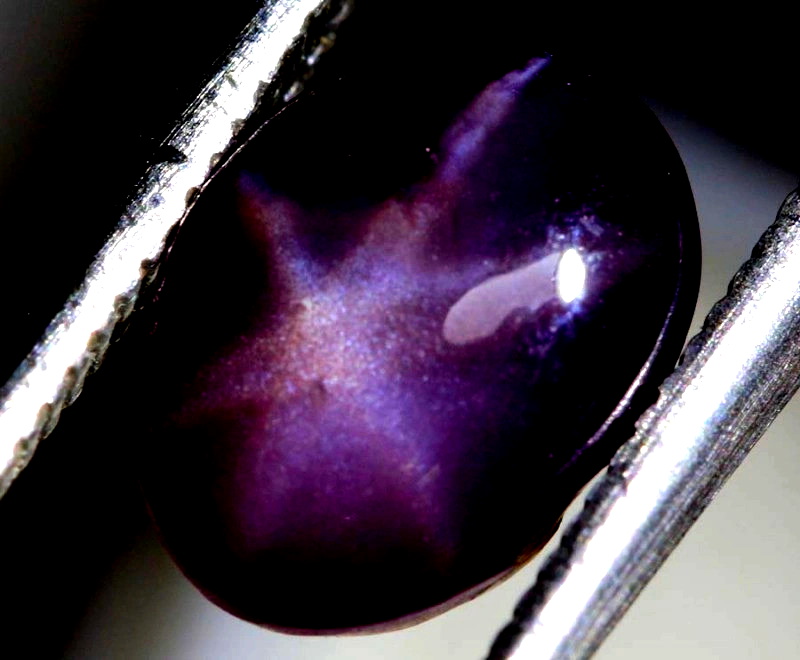 上图:紫色星形尖晶石凸圆形宝石
上图:紫色星形尖晶石凸圆形宝石
切
大多数橄榄石和尖晶石八月生日石都是刻面的。星光石或猫眼石必须切割成凸圆形。
橄榄石:宝石切割师在选择刻面切割时,必须考虑橄榄石的双折射、净度和颜色。棋盘格切割可以掩盖内含物,但圆形、梨形和椭圆形明亮式切割最受欢迎。
尖晶石:最常见的刻面尖晶石切割形状是椭圆形、圆形和垫形,这些形状可以最大限度地展现尖晶石的璀璨光芒。高品质的尖晶石材料可以切割成非标准尺寸。
克拉重量
橄榄石:宝石级橄榄石原石很少超过3克拉,大多数宝石重量不到1克拉。3克拉以上的宝石,每克拉单价要高得多。
尖晶石:如今大多数尖晶石的重量都在5克拉以下。超过5克拉的宝石每克拉单价明显更高,尤其是蓝色、红色和粉红色的尖晶石。
治疗
橄榄石:橄榄石很少经过处理,但有些会用金属箔来增强颜色和耐用性。
尖晶石:大多数天然尖晶石未经处理。少数情况下,为了提高净度,会进行加热和裂缝填充处理。此外,还会进行各种扩散处理,以产生钴蓝色等人工颜色。
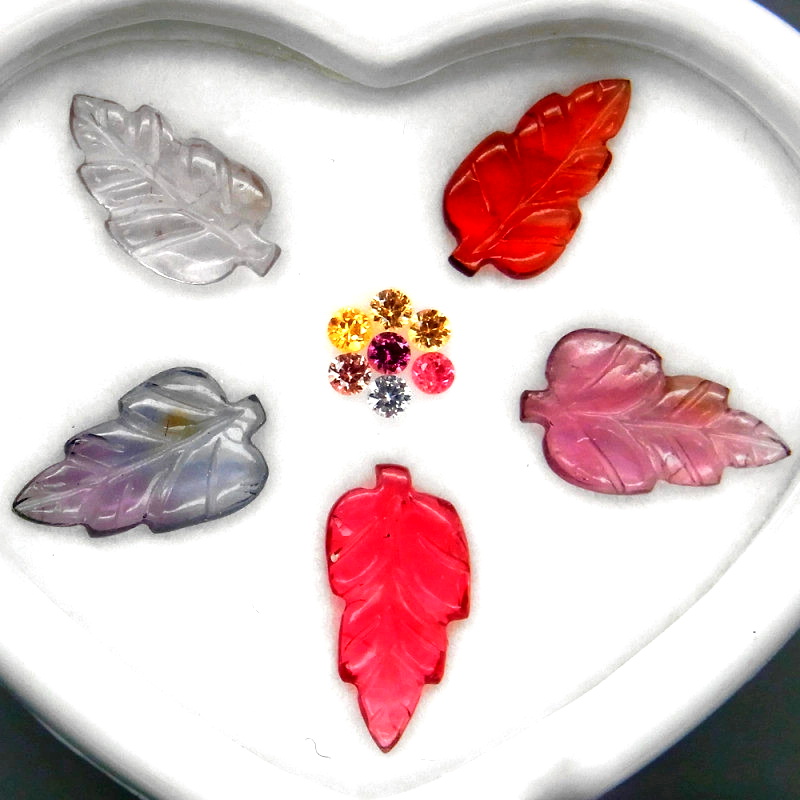 上图:刻面蓝宝石周围的雕刻尖晶石
上图:刻面蓝宝石周围的雕刻尖晶石
文化意义和信仰
橄榄石和尖晶石不仅美丽——这些八月诞生石还具有形而上学的意义。
橄榄石
从历史上看,橄榄石常常与光明和保护联系在一起。
古埃及人称它为“太阳宝石”,佩戴它是为了抵御“夜晚的恐惧”。一些古人认为橄榄石来自太阳爆炸。
16 世纪作家海因里希·科尼利厄斯·阿格里帕 (Heinrich Cornelius Agrippa) 声称,将橄榄石对着太阳会使其反射出一颗金色的星星,可以治愈呼吸问题。
有人认为橄榄石能驱散噩梦、疯狂和失忆。另一些人则声称它的“内在光芒”能带来清晰的思维和灵性觉知。
如今,橄榄石作为八月诞生石象征着更新、保护和和谐。
尖晶石
对于尖晶石来说,这种八月诞生石的含义与爱情和复兴有关。
作为一种治疗石,尖晶石被认为可以促进激情、奉献和幸福,同时减少焦虑和平衡情绪。
尖晶石的形而上学昵称包括:
希望之石
欢乐之石
复兴之石
不朽之石
从精神层面来说,有些人用尖晶石来增强直觉,并与天界沟通。缅甸人说尖晶石晶体是“nat thwe” ,意思是“被神灵打磨”。
八月诞生石还可以用于打开根脉轮并为佩戴者重新注入活力。
道德采购和可持续性
人们对冲突钻石的认识不断提高,可能会让有意识的消费者对橄榄石和尖晶石开采的道德和可持续性产生怀疑。
部分责任在于珠宝商,他们可以选择从规模较小、独立拥有且经过审查、供应链透明的矿场采购。另一部分责任在于买家,他们可以选择只从经过审查、透明的珠宝商处购买八月诞生石。
幸运的是,大约 80% 到 95% 的橄榄石宝石材料是由美国亚利桑那州圣卡洛斯阿帕奇保留地的阿帕奇部落成员独家开采的,这是一个向游客开放的独立作业。
许多珠宝商选择来自坦桑尼亚和斯里兰卡的尖晶石,这些地方的采矿活动透明且不涉及侵犯人权的行为。
许多买家已经转向购买八月诞生石的合成品,这种石具有与天然材料相同的化学和物理特性,但是是在实验室中制造的。
事实上,合成尖晶石是最常见的实验室制造宝石之一。合成橄榄石则不太常见。
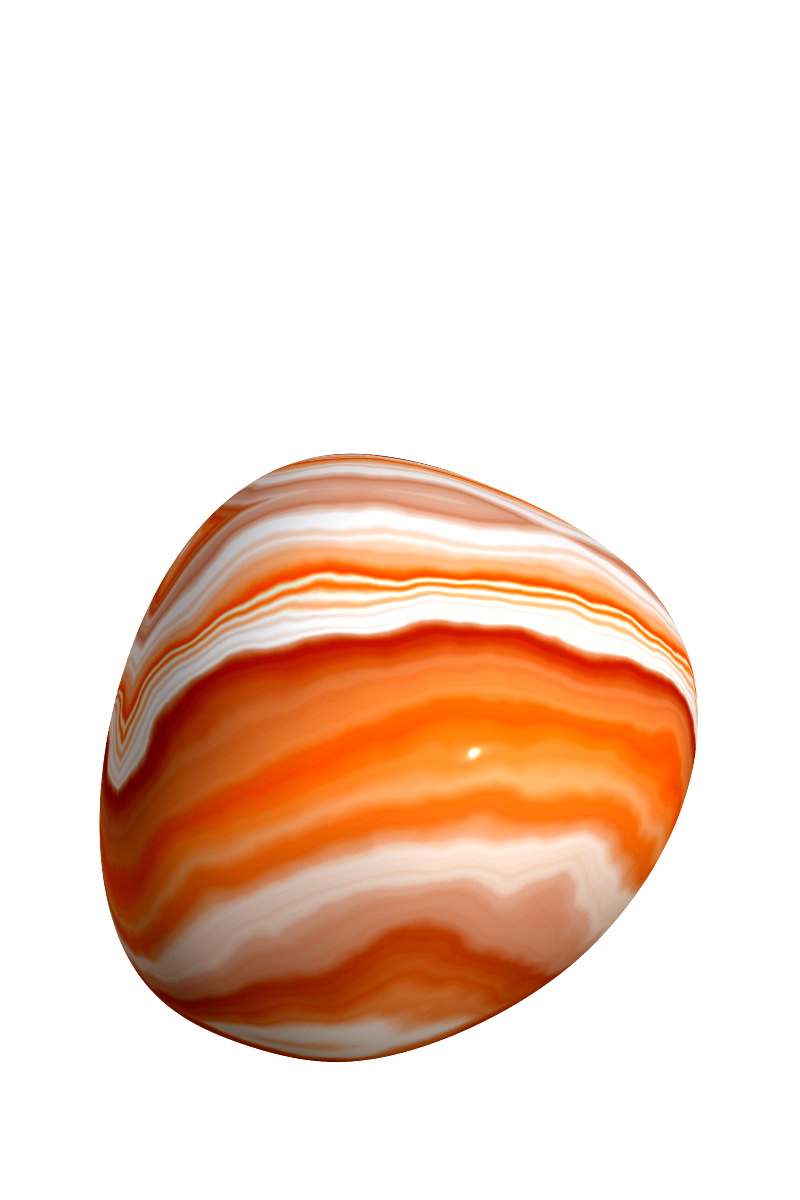 上图:红玛瑙凸圆形宝石
上图:红玛瑙凸圆形宝石
其他八月诞生石
如前所述,许多名单都包括第三个八月诞生石,即红玛瑙(一种由红玛瑙和缟玛瑙层组成的玉髓品种)或红玉髓(一种类似的玉髓品种)。
尖晶石本身通常是其他宝石的仿制品,但橄榄石有许多价格实惠的仿制品,例如:
从占星学角度来看,处女座八月的诞生石是什么?在传统的诞生石中,土象星座的处女座可能更喜欢草绿色的橄榄石。
狮子座的诞生石是什么?八月出生的狮子座可能更喜欢尖晶石的热情,尤其是火红的尖晶石。
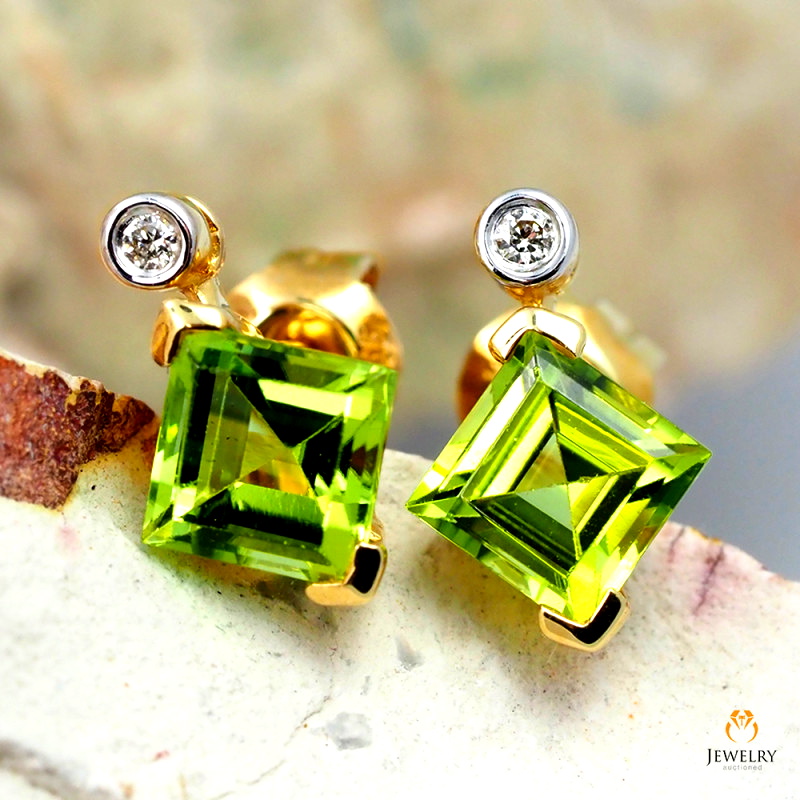 上图:刻面橄榄石耳环
上图:刻面橄榄石耳环
个性化八月诞生石礼物
八月诞生石礼物是一份用心的礼物,用来庆祝您所爱之人的一生。选定宝石后,就可以为它挑选最合适的八月诞生石首饰或配饰了。
以下是一些想法:
可叠戴的八月诞生石戒指
带有姓名首字母的诞生石项链
镶嵌诞生石的钨戒指
她们最喜爱形状的诞生石耳钉
雕刻诞生石装饰
八月诞生石钥匙扣
最重要的是,您的礼物有意义并且发自内心!
您最喜爱哪种八月诞生石?
尖晶石和橄榄石看似不同,但它们的相似之处远超乎你的想象。它们都象征着光明与新生,也常常被误认为是其他宝石。与红玛瑙一样,这些八月生日石为所有在夏末出生的人提供了各种各样的庆祝选择!
搜索Gemstone Encyclopedia
最新的文章
彩虹格纹日光石是一种长石,由于内部含有各种包裹体,呈现出三种绚丽的光学效应。它绚丽多彩的光泽和格纹图案使其成为收藏家梦寐以求的珍宝!
12th Jan 2026
文章分类
How To's is where you will find helpful articles from gem Rock Auctions on how to cut gemstones, select gemstones and buy gemstones.
9文章数
